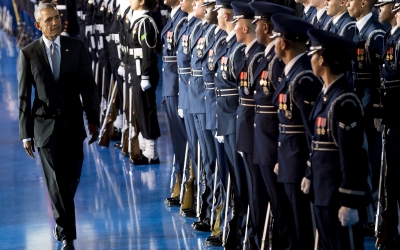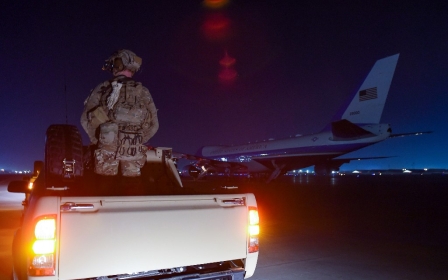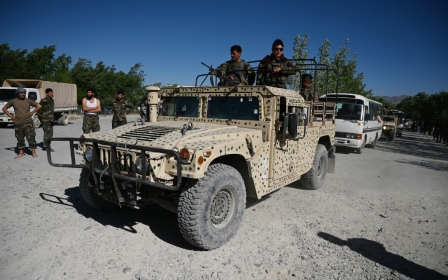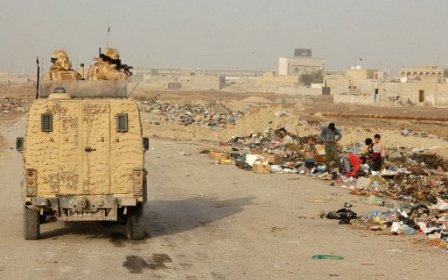Trump's air strikes in Afghanistan dramatically increased civilian deaths: Report

In 2019, air strikes from the US and its allies in Afghanistan killed 700 civilians, more than in any other year since the beginning of the war in 2001 and 2002, according to new research from Brown University's Cost of War project.
The new data casts light on US President Donald Trump's aerial warfare policies across the Middle East and in countries neighbouring the region, which have become less restricted and more opaque.
The report chronicled the number of civilian deaths in Afghanistan from US and Afghan air strikes over the past three years.
"From 2017 through 2019, civilian deaths due to US and allied forces' airstrikes in Afghanistan dramatically increased," the report said.
It added that "the number of civilians killed by international airstrikes increased about 330 percent from 2016, the last full year of the Obama administration, to 2019, the most recent year for which there is complete data from the United Nations".
The number of noncombatant deaths also increased, due to air strikes from the Afghan Air Force, which the report said was done to increase leverage in peace talks with the Taliban.
Between July and September 2020 alone, the Afghan Air Force killed 86 civilians and injured an additional 103 through the use of air strikes, the report said.
The author of the report, Neta Crawford, told Middle East Eye that she could not say what proportion of these air strikes were from drones or manned aircraft.
Still, the Bureau of Investigative Journalism said it believed most aerial strikes in the country came from drones.
In September, the Brown University project published a report that said at least 37 million people had been displaced as a result of the US "war on terror".
Civilians as 'political pawns'
The reason for the high number of civilians being killed in these strikes stemmed from a move by the Trump administration that relaxed the restrictions on aerial warfare.
"When the United States tightens its rules of engagement and restricts air strikes where civilians are at risk, civilian casualties tend to go down," the report said.
"When it loosens those restrictions, civilians are injured and killed in greater numbers."
Sahar Ghumkhor, a researcher in criminology at the University of Melbourne, Australia, said that the rise in civilian casualties in Afghanistan was largely seen by the US and its allies as "collateral damage or political pawns" to create a leg up against the Taliban.
"Even while the civilian death toll increases, human security and Afghan self-determination has never been the objective of this war," Ghumkhor told Middle East Eye.
"I think what the civilian death toll also shows is how much we've normalised violence in some parts of the world where it's even thinkable to do politics through political violence.
"In that respect, the US and its allies are responsible for the majority of the political violence in the country."
Trump's drone warfare in the Middle East
Former President Barack Obama was heavily criticised for his use of drone strikes, which were 10 times higher than his predecessor George W Bush.
Because of this, along with Trump's announcements of troop withdrawals from Syria, Afghanistan, Somalia and Iraq, supporters of the current president have stated that he has done more to put an end to the "forever wars" in the Middle East.
Yet the report from Brown University shows that under Trump there had been an escalation in warfare, through the use of air strikes, including from drones, and they had led to an increase in civilian deaths in Afghanistan.
In Trump's first year of office, his administration eased two restrictions for drone strikes: removing the limitation that only allowed strikes on high-ranking militants and removing the previous vetting process for drone strikes.
The US also relaxed a restriction on its rules of engagement so that it no longer had to be in direct contact with enemy forces to conduct air strikes.
"The consequences of the relaxed rules of engagement were immediate," the Cost of War project's report said.
This trend exists across the Middle East as well, with the US repeatedly using drone strikes in Iraq, Syria, Somalia and Yemen.
In 2017, drone strikes in Yemen increased by 300 percent from the previous year, according to data compiled by the Bureau of Investigative Journalism. The number of drone strikes in Somalia also increased significantly under Trump.
Still, the full picture of these attacks is not clear. In March, the US Central Command stopped publishing monthly summaries of its air strikes in Afghanistan.
Meanwhile, rights groups have criticised the United States Africa Command (US Africom) for failing to properly record civilian deaths in air strikes in Somalia.
Airwars, a UK-based war monitor, found that at least 86 civilians had benn killed in Yemen in 2020 as a direct result of US air strikes. The US has not declared a drone strike in Yemen since 2019.
Biden's silence on drone strikes
Despite his many criticisms of Trump's foreign policy decisions, President-elect Joe Biden has remained silent on the issue of drone strikes.
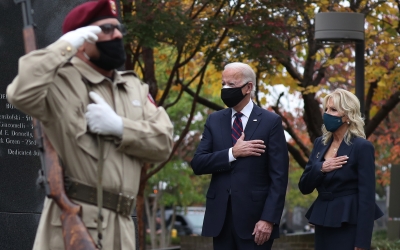
The president-elect has also picked Avril Haines to lead America's intelligence agencies. Haines was one of the architects of Obama's drone policies.
The choice of Haines has been heavily criticised by the progressive wing of the Democratic Party and anti-war activists, who have called for cabinet picks that do not have connections to US defence contractors.
Ghumkhor noted that "no administration of the last 20 years has been held accountable in any way for this growing violence", including the Bush and Obama administrations - a sign that Trump may also not be held accountable and Biden may continue similar policies when it comes to air strikes and drone warfare.
As long as Afghanistan has been "perceived as the 'good war', there has been less urgency in observing the US role there", Ghumkhor said.
This article is available in French on Middle East Eye French edition.
Middle East Eye delivers independent and unrivalled coverage and analysis of the Middle East, North Africa and beyond. To learn more about republishing this content and the associated fees, please fill out this form. More about MEE can be found here.


